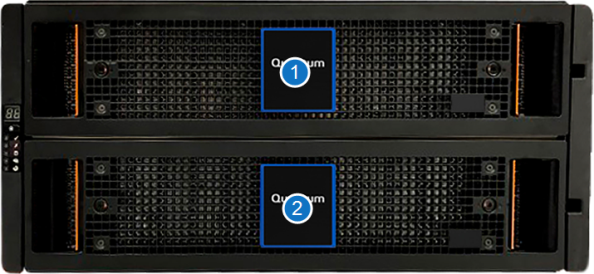Supported RAID Configurations
RAID is short for Redundant Array of Independent (or Inexpensive) Disks, which is a category of storage that employs two or more drives in combination for fault tolerance and performance. There are a number of RAID levels in use today such as 0, 1, 3, 5, 6 and 10. The DXi9200 uses RAID 6.
RAID 6 uses block-level striping with two parity blocks distributed across all member disks. Dual parity provided by a RAID 6 configuration ensures that your data retains full integrity even in the event of two drive failures. Since single-parity RAID levels are vulnerable to data loss until the failed drive is rebuilt: the larger the drive, the longer the rebuild will take and the longer the system is vulnerable to possible data loss.
DXi9200 RAID Sets
| DXi9200 Configuration | System Capacity |
Description |
|---|---|---|
| 1 Node, 1 RBOD | 110 TB - 1100 TB |
|
| 1 Node, 2 RBODs | 1155 TB - 2200 TB |
|

Array Module RAID Sets

| Item |
Description |
|---|---|
| 1 |
|
| 2 |
|
